PSYCHOSHAMANISM AND TRAUMA
The shamanic image here is of a shamanic power animal finding and retrieving a lost part, usually referred to in the shamanic idiom as a “lost soul.” The Bear clasps the child part closely, safely, and lovingly as it returns. As such, the Bear-spirit is highly aligned with the True Self of the traumatized, previously exiled part.
In this blog we shall see that the human psyche is of vast complexity, normally made of many parts, with instinctual, archetypal, and learned programs, including those that are exiled and carry great emotional or physical pain, fear, and often, shame. It is normal to be inwardly complex. When we suffer trauma or injury, some parts of ourselves may become very wounded, and may become lost to our awareness. Because they are hidden does not mean they don’t affect us. They can stir us up, overwhelm us occasionally as they escape their exile, and they and other parts can actually hijack our entire self-system.
“Psychoshamanism” is a synthesis of the shamanic concern for finding and healing our lost and hurting parts, and modern psychological models and neuroscientific research. In this blog I will explore what happens to us because of trauma, and how we can heal our wounded parts.
DEPTH PSYCHOLOGY AND THE MYTH OF A MONOLITHIC PSYCHE
We speak the word “mind” as if it were one thing, or of the “personality” or of the “psyche.” But the idea of a simple unity of mind or personality is a myth that has been eroding for more than 120 years. Since the days of Jean Martin Charcot
and Pierre Janet at the hôpital Salpêtrière in Paris, with the conceptions of the duality, multiplicity of subconscious psychic forces,
to Freud ‘s tripartite model of the Id, Ego, and Super-ego, depth psychology has called into question a simple unity of mind and self. C.G. Jung created a map of the psyche as polycentric, structured by many systems such as instinctual programs and phylogenetic foundations, archetypal patterns, and complexes, both healthy and pathological.
Jung once likened his vision of psychic complexity to Paraselsus imagery of “stars and sparks and luminous fishes eyes.” In my book Jung and Shamanism in Dialogue, penned in 1990, I devoted a couple chapters to this psychic multiplicity, comparing Jung’s model of poly-psychic complexity to archaic shamanic systems of psychic complexity.  I comparatively studied and contrasted conceptions of trauma and its healing in shamanic and Jungian psychological frameworks, and drew attention to the normal dissociative capacities and normal psychological complexes of the psyche, in contrasts to pathological dissociation and pathological or autonomous complexes that can hijack or possess the individual ego and its executive functions.
I comparatively studied and contrasted conceptions of trauma and its healing in shamanic and Jungian psychological frameworks, and drew attention to the normal dissociative capacities and normal psychological complexes of the psyche, in contrasts to pathological dissociation and pathological or autonomous complexes that can hijack or possess the individual ego and its executive functions.
MODULAR BRAIN AND BEING MULTIMINDED
In the last 35 years, neuroscience and cognitive psychology have been catching up with depth psychological models of the poly-centricity of the psyche. According to brain researcher Michael Gazzaniga M.D., whose early research on the bilateral brain came to the conclusion that the simple psychological distinction between two hemishperes of the brain was in fact far too simple.
The brain, the home and supporting structure of the complex individual psyche he concluded consists in an interminable number of modular processing units–modules with specialized functions. Each module is rather distinct in function, even as it may interact with other modules to solve problems. Robert Ornstein, the famous psychoneurologist spoke of “multiple mind” –the idea that the human mind is not a single intellectual entity, but is a changeable configuration of smaller mind units that work together, or function competitively.
The modular brain supports not only multiple modes of cognition, but also multiple selves, or in more popular language, multiple part selves. In psychotherapy today, it has become easier to just refer to them as “parts.”
Artificial Intelligence and computer models of the psyche now suggest something like the brain as the hardware, the various programs like multiple minds. But it is not analogue computers but the idea of multiple computers or multiples minds doing parallel computations side by side simultaneously are conceived as groups of intelligent entities putting their resources together to solve problems, for example. Since it is humans who have built these computers, it seems likely that they mirror something of the human brain and the consciousnesses it supports. It was perhaps John Lily, M.D.,

John C. Lily, M.D. psychiatrist, psychoanalyst, consciousness researcher in the Artificial Intelligence Model and the mentality of Dolphins.
a psychiatrist, psychoanalyst and early consciousness researcher, famous for his research on LSD25 and flotation tanks, and his pioneering research into the mind of dolphins, who first opened this model of brain and consciousness in a human biocomputer. His book, Programming and Meta-Programing in the Human Biocomputer is now a classic in the field. Lily suggested that various subconscious programs and sub-self systems may help solve problems, but they may also repress, dissociate, be programmed and reprogrammed. They can also cause conflicts and real psychological trouble, being able to run amok and occasionally hijack or totally commandeer cognitive or behavioral control in spite of a person’s intentions.
We have all had the experience, at times, of feeling caught in an internal conflict, able to say “part of me wants to eat healthy, and another part of me wants to eat whatever it wants, whenever it wants.”
PART-SELVES AND TRAUMA
Our part-selves, viewed from a Jungian or archetypalist perspective may be conceived as clusters of related memories, feelings, beliefs, even points of view, function and intention. The good news is that we no longer have to fear multiplicity, because we are naturally multiple anyway. The condition of “multiple personality disorder “(dissociative identity disorder) is an exaggerated version of this based in severe trauma.
We all suffer some level of trauma throughout the difficulties of the perinatal birth process, and in our childhood, because of our vulnerabilities. Some times it is great trauma, caused by sexual abuse, sickness, accident, or surgery. Sometimes it is empathic failure at some point of our parents, failure to do something we needed them to do (traumas of omission), or their doing the wrong thing (traumas of commission). The condition of multiple personality disorder [MPD], now referred to as “dissociative identity disorder” [DID] appears to be the result of a combination of severe trauma coupled with a genetically strengthened capacity to personify and imaginatively elaborate normal defensive dissociative processes. Traumas create dissociated parts that are in great pain and are often exiled from our own awareness.
Such traumas thwart biological and archetypal intent, and prevent a good systemic integration or wholeness and resilience of the total self-system whether they be extreme or not.
THE INTERNAL FAMILY SYSTEMS MODEL [IFS]
The internal family systems model was developed by Richard C. Schwarz,Ph.D., emerging out of his work with patient trauma in psychotherapy. For more than two decades now it has been a serious strategy for psychotherapy of trauma.
IFS recommends itself because it is an especially clear and relatively non-technical model that is useful for the general reader, patient and therapist, making quick grasp of its tenets and therapeutic strategies possible. IFS is an integrative approach to individual and couple psychotherapy that carries the work on trauma and dissociation which we have been discussing, forward. It creatively combines systems thinking with the view that the mind is made up of relatively distinct entities called sub-personalities, or parts. Each of these are relatively distinct, with their own view points, emotions, motives, memories and defining characteristics. A basic assumption is that each part is viewed as having a positive intent, no matter how hurting it may be, nor how angry or self-destructive. It is intending to accomplish something, for example to help oneself survive or cope. Hence there is no reason to fight, judge, coerce, or eliminate a troublesome part. The goal of IFS therapy is to promote activation of the spiritual center or Self, and institute healing, systemic connection, internal cooperation, and harmony. We can have many parts. Most of us, it is speculated have at least 15 identifiable parts that run various aspects of our lives. Some people have many more.
Whereas Jungians tend to group an individual’s complexes ( version of sub-persons or parts) into patterns dominated by various archetypal themes, IFS therapists groups these parts into three types, called Managers, Exiles, and Firefighters. A fourth entity is called the Self, meaning the True Self or spiritual center of
the person that is often entangled with the internal parts and thus rendered more or less ineffective. Therapy will focus on awakening or activating the True Self as crucial to therapeutic success, for it is the entity within the total internal self-system that can help and heal parts that suffer pain and other burdening emotional baggage.
The MANAGERS
Managers are parts with preemptive roles. The scan how the person interacts with the external world to protect them from being hurt by others and try to prevent painful or traumatic feelings and experiences from flooding the persons awareness.

Managers are a cluster of parts that silences the wounded, afraid, and shame feeling parts to protect from overwhelming. Part of the Defence system.
The EXILES
Exiles are parts or sub-persons that are in pain, experience shame, fear or trauma, usually, but not always, from childhood.

Exiles are parts who are traumatized and hurting. They are dissociated or repressed by the Managers, as a survival strategy.
It is the Managers and Firefighters that try to exile those parts from conscious awareness—to prevent the pain from coming to the surface and causing overwhelming by the suffering.
The FIREFIGHTERS
Firefighters are parts that activate when an exiled part emerges, breaks out, or demands attention. The Firefighter parts work to distract a person’s attention from the hurt or shame experienced by the emerging exile.

Firefighters also come in clusters of parts whose task is to suppress any Exile part that has escaped or surfaced, distracting it or putting out the emotional fire to protect from overwhelming.
They do this by various strategies which lead to impulsive behaviors such as alcohol or drug abuse, over-eating, violent acting out, or inappropriate sex.
They can also distract from pain by directing a person to focus excessively on subtle activities such as over-working, over-spending, over-sleeping, or over-medicating with prescription medicines.
The SELF as Spiritual
IFS sees more than our parts. It sees people as having an underlying spiritual center or True Self that, once awakened and activated, disentangled from the parts, can help them heal and come into a more fruitful integration with each other. Everyone has a spiritual center, a True Self, even when their experience has been dominated by the parts. My own clinical work draws on IFS and all the material I write about here to formulate principles of healing.
The states of consciousness that come along with the awakened Self include qualities of self-observing Witness, curiosity, connectedness, compassion, and centered calmness, and the power to lead the parts, to name a few. The therapist’s first job becomes to help wake the Self up. It doesn’t need Self-development, but awakening to its creative, healing, and orchestrating power. Awakened from what? Awakened from its slumber or unconsciousness entanglement amongst the parts or sub-persons. The therapists second job is to help facilitate the process of the client accessing the Self and actively entering into relationship with the parts, and then heal each wounded part. As the parts become healed, cathartically unburdened of their pain and traumatically charged memories, they can let go of their destructive and hijacking roles and can can become harmonious with the whole self-system creatively. The therapist directs attention to the patient’s Self as the orchestrator of the parts. The goals is to have a cooperative, collaborative, and trusting relationship between the Self and each part.
The Self has a capacity for a meta-perspective on the self-system, on all the parts. It is not simply a hypnotically induced witness consciousness nor a passive observer.
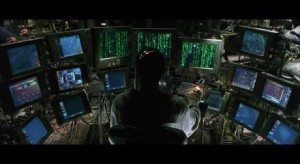
The Self can witness and monitor things with the parts and programs in the self-system, put it can also take executive action.
The Self can be highly active. In fact it is, as Kierkegaard suggested, truly itself only when it is in active relationship to itself (i.e. to the part selves). The Self’s job is to practice leadership of the parts, of the entire self-system. Everyone’s Self has the capacity to lead, but when it is unconsciously enmeshed with other parts, it is not using its capacity to be an effective leader. Once it is awakened and disentangled from the parts, and is leading effectively and the parts have calmed down, people feel more centered, secure, and present. By “present” I mean the “power of now” (in Eckhart Tolle’s sense), of liberation from being over-concerned about the past or preoccupied with the future. The person then has access to talents and parts and their input, but doesn’t allow any part(s) to take over without permission. Of course there may be times when one has a party and lets some parts run riot for fun, but they have faith that the Self will know when it is time to resume leadership.
THE SELF AS CONDUCTOR OF AN ORCHESTRA
Richard Schwartz, Ph.D., has used the metaphor of a symphonic conductor. He suggests that a way to think about the Self and the parts is in terms of an orchestra, with individual musicians and their instruments, talents, and skill-sets as analogous to a symphonic orchestration of parts , and the Self as analogous to the Conductor.
“A good conductor has a sense of the value of each instrument and the ability of every musician, and is so familiar with the music theory that he or she can sense precisely the best point in a symphony to draw out one section and mute another.  Indeed it is often important for a musician to be able to silence his or her instrument at the right time as it is to play the melody skillfully: Each musician, while wanting to have the spotlight his or her own talent…has enough respect for the conductor’s judgment that he or she remains in the role of following the conductor yet playing as well as possible. This kind of system is (literally) harmonious.”
Indeed it is often important for a musician to be able to silence his or her instrument at the right time as it is to play the melody skillfully: Each musician, while wanting to have the spotlight his or her own talent…has enough respect for the conductor’s judgment that he or she remains in the role of following the conductor yet playing as well as possible. This kind of system is (literally) harmonious.”
Richard C. Schwartz -Networker, March-Arpil 1987
THE SPIRITUAL NATURE OF THE SELF AND THE HEART-PATH
IFS recognizes the spiritual nature of the Self, allowing the psychotherapy to be a spiritual process, and allowing the psychotherapy to help with spiritual development. In my book PSYCHOTHERAPY AND THE SACRED I show how a variety of spiritual practices may be actively used to awaken and activate the Self in its leadership and healing capacities. These range from the active use of meditation and prayer, to worship and various forms of sacred ceremony. Sacred practices become therapeutic actions. These include the use of sacred symbolic objects (axis mundi symbols) like mandalas, medicine wheels, Buddha statues, amulets or symbols that function like shamanic talismans to remind you, the Self to wake up and lead. Important also are such techniques as use of sacred song and chant, as well as deploying the sensuous elements of incense, smudging, and flower limpias, and genuine spiritual community. Again, any of these symbols and actions help awaken the Self, help you embody it, and call it back from its unconscious submergence and enmeshment in the parts, and eventually help it stabilize in leadership of the who internal self-system.
In my own personal and clinical practice, I use the Amerindian heart path and medicine wheel teachings as a foundation. The heart comes equipped with an intuitive navigational system [NGS], and the more one lives from it, the more in one’s spiritual center one becomes. You activate your role as an Artist of the Spirit.  I have distilled several guiding principles, called the Four Acts of Power to help my clients and students awaken and activate the spiritual Self and its leadership in their lives. These principles also serve as active use of spiritual resources in psychotherapy, to activate leadership of the Self, and bring about healing.
I have distilled several guiding principles, called the Four Acts of Power to help my clients and students awaken and activate the spiritual Self and its leadership in their lives. These principles also serve as active use of spiritual resources in psychotherapy, to activate leadership of the Self, and bring about healing.
As people walk this heart path, I have observed more and more of their potentiality, and sense of life-purpose come on line. At the same time, I see how attempting to sincerely walk this heart path confronts them with old trauma-based parts that thwart their efforts to succeed. For this reason, IFS is one powerful strategy for healing the internal self-system of its traumas, and unnecessary conflicts, rebellions, and hijacking of the whole self-system in destructive ways. I view psychopathology as simply unhealed parts, their pain and unhelpful beliefs, fears, and shame-charged memories that are in the way.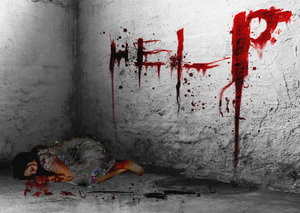
 The good news is that real healing help is possible, no matter how wounded or devastated the parts. My own formula for healing consists of several steps.
The good news is that real healing help is possible, no matter how wounded or devastated the parts. My own formula for healing consists of several steps.
-
Activate the Self with information, support, and basic spiritual practice, and begin to disentangle it from the parts. I speak directly to it and remind it that “You are no content! You are the one who can enter into relationship to it, and work with it, heal it.”
-
Achieve trust permission from The Manager parts to work on the Exiles.
-
Re-experience the wounding, but from the safe and centered and adult vantage point of the Self. Sacred symbols and spiritual actions can support this.
-
Confess anything you must, before the Sacred, or with the therapist, or in a group or community.
-
Allow the burden each hurting part carries to be released through full catharisis/abreaction. This is important for limbic repair.
-
Let go Grieve.
-
Forgive the one who hurt you.
-
Forgive yourself for suffering and allowing wounded parts to thwart yourself for so long (a ritual or sacred ceremony can help bring closure).
-
Integrate and Implement (daily rituals and talismans)
THERAPIST’S SELF KNOWLEDGE AND WOUNDED HEALER WORK
Before you seek to help others, you must do your own parts healing work. Avoid therapists who have not done their own inner parts healing work. The therapist’s self-knowledge, just as does the shaman’s, comes from this self- experiential work—it is the crucial training. There is little place for this kind of inner work, unfortunately in academic and professional training of psychologists and psychotherapists. The more healed an individual becomes, the more skilled at therapy. Ask prospective therapists if they have done their own inner parts healing work. If not avoid them, for you will be wasting time with a therapist who lacks real self-knowledge of the kind that cannot be got out of a book.
MANDALA-GAZING TECHNIQUE FOR AWAKENING THE SELF
It is common today in the spiritual literature and especially shamanic literature to say that we are dreaming all the time, and creating our realities. It is true. But there are different levels and places from which we are creating, and we may be creating chaos, discord or self-sabotage, or we can create from the place of the deeper Self and transform the fragmentation into a richly intricate and harmonious wholeness, in which each part, pattern, and detail of the psyche contributes to the symphonic whole. A very simple technique for awakening the Self and reminding it of its leadership role comes from gazing at mandalas contemplatively. The word “mandala” is in Sanskrit a “sacred circle.” The most famous examples of it are the Tibetan mandalas and Thangkas, and the Hindu Yantras, and the Amerindian Medicine Wheels.
In these designs, there is normally a circle with a large number of harmonized and balanced parts, wellformed around a sacred center point. C. G. Jung spoke of the mandala as a symbol of the Self. As such it symbolizes the totality of content (parts, archetypal patterns and details such as memories, instincts, complexes, emotional energy systems, and so on). The Tibetans do beautiful paintings, sometimes sand paintings of these mandalas, and enter into them like 3-D holograms  and consciously interact with and inquire into the various psychic, archetypal and transpersonal forces, those which cause and result in suffering, and those which elevate, center, and the central sources, the ultimate identity, which may be conceived as empty and full—but not attached to parts or any content at all. Some of the mandalas are in 3-D form, illulstrating they are meant to be imagined holographically that way, and various levels explored. Many of these images are 3-D temples with various instinctual-emotional energies personified, and various buddhas or spiritual beings that can be contemplated and consciously integrated. One of my favorite mandalas is called the elephant mandala.
and consciously interact with and inquire into the various psychic, archetypal and transpersonal forces, those which cause and result in suffering, and those which elevate, center, and the central sources, the ultimate identity, which may be conceived as empty and full—but not attached to parts or any content at all. Some of the mandalas are in 3-D form, illulstrating they are meant to be imagined holographically that way, and various levels explored. Many of these images are 3-D temples with various instinctual-emotional energies personified, and various buddhas or spiritual beings that can be contemplated and consciously integrated. One of my favorite mandalas is called the elephant mandala. 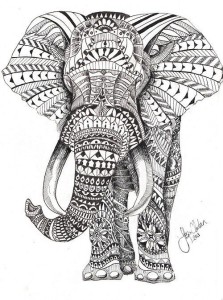 It is an elephant tattoed with all the parts, patterns, and details on its skin. The elephant itself symbolizes the Self, the spiritual center, while the tattoo patterns and details represent the content (parts) arrayed harmoniously all over the elephant.
It is an elephant tattoed with all the parts, patterns, and details on its skin. The elephant itself symbolizes the Self, the spiritual center, while the tattoo patterns and details represent the content (parts) arrayed harmoniously all over the elephant.
For our purposes, the spiritual act of mandala-gazing helps one take in the complexity of content (parts) and helps us perceive the central source and totality, which Jung called the Self. Mandala-gazing can help us wake up and activate the leadership of the Self. It can help disentangle it from parts, liberations from identification and enmeshment with the forces of the inner world. I recommend having books with photo images which you can copy, or google images of mandalas and yantras that you can print off and put on your walls, as talismanic reminders. 
The Amerindian medicine wheel is also a kind of mandala that plays the same role. It is a mythic image, complete with a sacred center (axis mundi) and four cardinal quadrants, and with 3-D implications for the superconscious heavenly realms of Spirit above, and the subconscious and chthonic depths below. Medicine wheel contemplation similarly lures you towards putting and your parts in harmony with your spiritual center (the Self), and in accord with the forces of the cosmos, earth, and society, or “all my relations.”
Parting Comments: Donald Kalched and Ann Weiser Cornell
I have offered here a lineage of parts work and trauma that is in no sense complete. Important work has been done by many other innovative psychotherapists. The work of Jungian analyst Donald Kalched on the psyche’s self-care system should be mentioned.
What we spoked of here as Managers and Firefighters would be interpreted as part of the self-care system in Kalched’s work. He calls that system archetypal because it is both archaic and universal or typical of the psyche’s inherent self-preservative origins. He sees the self-care system as performing ther self-regulatory and inner/outer functions, which Jungians and Freudians normally ascribed to the ego. Because I seek simpler language that my clients and students can quickly grasp, I decided not to present Kalched’s highly important work here. One of his most illuminating statements is this: “Once the trauma defense is organized, all relations with the outer world are ‘screened.’ by the self-care system. What was intended to be a defense against further trauma becomes a major resistance to all unguarded spontaneous expressions of self in the world. The person survives, but cannot live creatively.”
Another insightful passage regarding that realm to which the Exiles go, Kalched writes: “Often the interior world into which they [parts] retreated were childlike worlds, rich in fantasy, but with a very wistful melancholy cast. In the museum-like ‘sanctuary of innocence’ these patients club to a remnant of their childhood experience which had been magical and sustaining at one time, but which did not grow along with the rest of them.”
I should also mention the powerful and insightful work of Ann Wesier Cornell, linguistics scholar turned focusing counselor.  Her work in collaboration with Barbara McGavin on Inner Relationship Focusing [IRF], as similarities with IFS, but uses the felt-sense focusing method of Eugene T. Gendlin, the University of Chicago psychologist and philosopher, yet modifying the Six Steps outlined by Gendlin. Her approach claims that IRF emphasizes gently interacting with all part’s of one’s being that are in conflict; parts often denied or pushed away as unacceptable or demeaning; parts that are overwhelming, and parts that are so buried [in exile] or subtle they need to be drawn out with patience and gentleness. Inner Relationship Focusing emphasizes the importance of the Self and being in presence, including using the “language of presence:” “Something in me feels tight and scared,’ rather than using the language of identification:“I feel tight and scared.” This is a crucial insight to working with inner parts, to remember you are not the, but are the one able to gently listen to them, care for them, and be in a collaborative relationship with them.
Her work in collaboration with Barbara McGavin on Inner Relationship Focusing [IRF], as similarities with IFS, but uses the felt-sense focusing method of Eugene T. Gendlin, the University of Chicago psychologist and philosopher, yet modifying the Six Steps outlined by Gendlin. Her approach claims that IRF emphasizes gently interacting with all part’s of one’s being that are in conflict; parts often denied or pushed away as unacceptable or demeaning; parts that are overwhelming, and parts that are so buried [in exile] or subtle they need to be drawn out with patience and gentleness. Inner Relationship Focusing emphasizes the importance of the Self and being in presence, including using the “language of presence:” “Something in me feels tight and scared,’ rather than using the language of identification:“I feel tight and scared.” This is a crucial insight to working with inner parts, to remember you are not the, but are the one able to gently listen to them, care for them, and be in a collaborative relationship with them.
A
__ ___ ___
To be continued.
In Part II we shall discuss powerful holotropic methods, including sacred breathwork and entheogen based therapist for healing traumatic parts and facilitating rapid integration. We will also explore the role of the brain and traumatized parts and their healing.
REFERENCES
Roberto Assagioli, M.D. “Self-Realization and Psychological Disturbances.” in Stanslav Grof and Christina Grof. SPIRITUAL EMERGENCY: When Personal Transformation Becomes a Crisis. J.P. Tarcher/Putnam Books, 1989
Ann Weiser Cornell, Ph.D. The Radical Acceptance of Everything: Living a Focusing Life. Calluna Press 2005
Donald Kalched. THE INNER WORLD OF TRAUMA : Archetypal Defenses of the Personal Spirit.
John C. Lily, M.D. PROGRAMMING AND META-PROGRAMMING IN THE HUMAN BIOCOMPUTER. JULIAN PRESS, 1968.
COLIN ROSS, M.D. MULTIPLE PERSONALITY DISORDER: Diagnosis, Clinical Features, and Treatment. Wiley & Sons. 1989
C. Michael Smith, PH.D. JUNG AND SHAMANISM IN DIALOGUE: Retrieving Soul / Retrieving the Sacred. TRAFFORD, 2ND EDITION, 2007.
C. Michael Smith, PH.D.. PSYCHOTHERAPY AND THE SACRED: The Active Use of Religious Resources in Psychotherapy. University of Chicago; Center for the Scientific Study of Religion Press, 1995.
Rirchard C. Schwartz, PH.D. OUR MULTIPLE SELVES: Applying Systems Thinking to the Inner Family. March-April 1987
ABOUT THE AUTHOR
C. Michael Smith, Ph.D., (Mikkal) is a clinical psychologist, practicing, researching and writing in the field of depth psychology for nearly four decades. He is an expert in the treatment of trauma and psycho-spiritual emergencies, as well as an active medical anthropologist, incorporating insights and practices of cross-cultural healing systems into clinical psychotherapeutic practice. In 1995, Smith’s first book was published: the award-winning, PSYCHOTHERAPY AND THE SACRED: The Active Use of Religious Resources in Psychotherapy, and in 1997, his second book was published: the classic volume, JUNG AND SHAMANISM IN DIALOGUE: Retrieving Soul/ Retrieving the Sacred. As an international shamanic teacher, founder and director of Crows Nest Centers for Shamanic Studies International, Mikkal creates a novel synergy of science, art and practice that weaves together traditional shamanic healing systems with decades of scholarly and hands-on work in modern depth and Jungian psychology. Mikkal offers several unique series of experiential teachings on four continents, where he is joined by communities of shamanic apprentices and students in the USA, France, Belgium, South Africa and Peru. For many years is a teaching member of the French Cercle de Sagesse Ancestral de l’Union, and was elected to Le College de Chamanisme, in Paris, France in 2014. His current research focus centers in the Peruvian Amazon plant shamanism and the healing of trauma disorders and depression.
Mikkal is currently offering a certificate fieldwork studies program in the Peruvian Amazon, for those interested in acquiring experience with Amazonian shamanism and who are doing dissertation research. For decades Mikkal has sat on doctoral dissertation committees at Pacifica Graduate Institute, Saybrook Institute, the Chicago School of Psychology, the Michigan School of Psychology, California Institute of Integral Studies, the University of Washington, Harvard University, and recently has been a research consultant to the University of Michigan Medical School (anesthesiology department). He was lecturer in cultural psychology at the University of Chicago, and taught the doctoral seminar on Jung, Depth Psychology and Shamanic studies as a Fellow for the Center for Ethics, Theology and the Human Sciences, at the Chicago Theological Seminary.



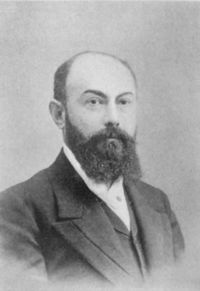
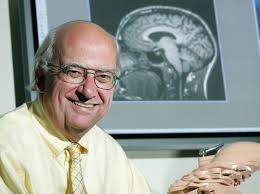
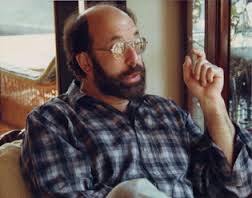


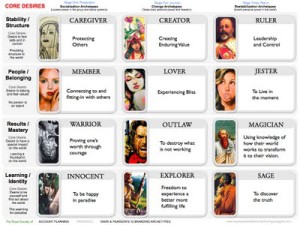
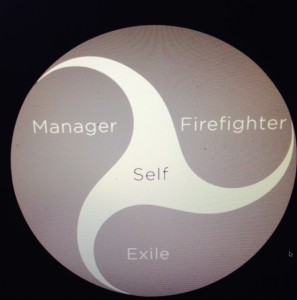





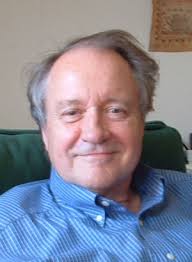
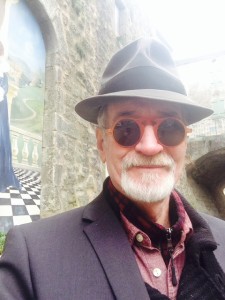
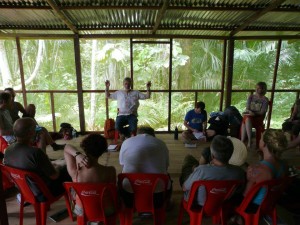
Really useful information. I think it could also be useful for everyone to know how and where to merge documents online. Merging files is super easy with AltoMerge. Try it on your own here
https://goo.gl/TvUGyEand you’ll make sure how it’s simple.CORRECTION: To SUBSCRIBE and follow. The Subscription box in on the *HOME* page, lower right side of the side Menu Bar.
Good morning Dr. Smith,
I have attempted to contact you via voicemail regarding your services. How can I go about speaking with you?
Hi Stephanie: Did you use the telephone associated with the Contact list, on this website? If so, Jamila will schedule a time for us to talk via tele or Skype. I am however, just now leaving the USA to teach in Europe, and will be in a wilderness retreat area. So you can set something up through the contact page to talk when I get back, May 5th. Thank you. 🙂
Hello,
Yes I used that number, as well as one listed on another site that was your personal voicemail. I will attempt to leave another on the Crows Nest mailbox. I look forward to speaking with you after your return. Have a wonderful trip and safe travels!
Could you add me to your mailing list? I am interested and devoted to the field of ecotherapy which has overlapping practices with work. Thank you for the broader inspiration.
please ad me to your mailing list, thank you
Hi Kathleen. There is an subscribe box on the lower left side of the website home page. You have to subscribe from your computer, but then you will get the posts. Wish i could do it myself, but it isn’t set up that way. Thanksand Bright Blessings. Mikkal
Hi Jack. You have to add yourself to the list. It is easy, the box is on lower left area of the Home page. just put in your name and email there, and presto, you follow the mailing list.
WHAT ABOUT ASPECTS OF TRAUMATIC BRAIN INJURY .
Hi David. Perhaps you could specifiy your question further for me regarding brain trauma. What about it would you like to know, and what kind of brain trauma? Thanks for your querry.